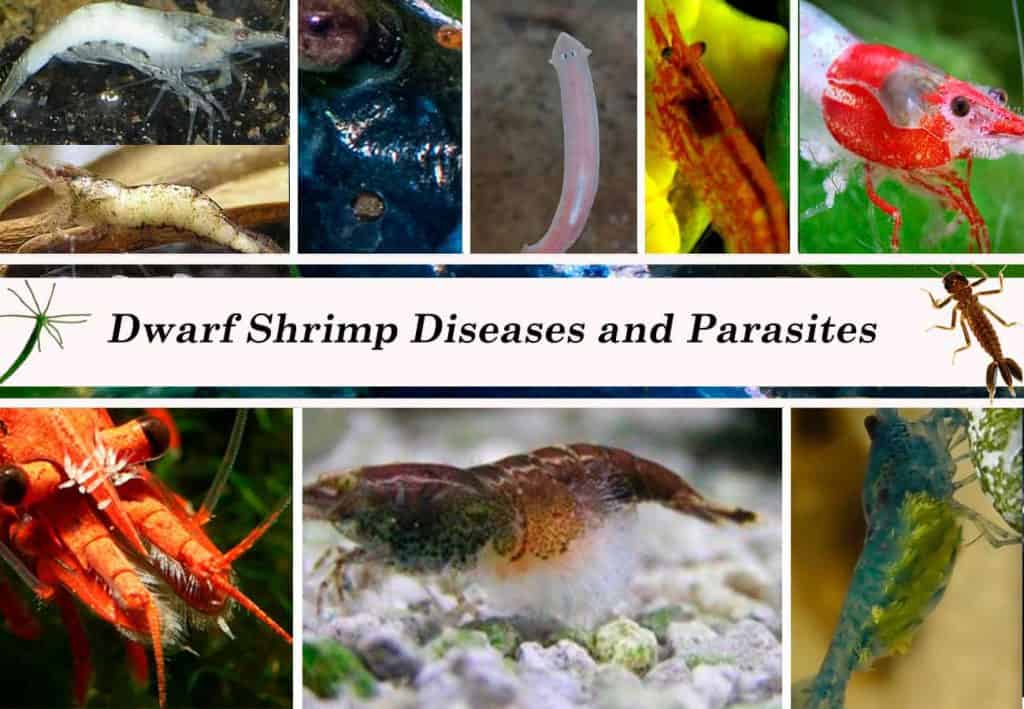- Your cart is empty
- Continue Shopping
Cherry Shrimp Diseases: How to Identify, Prevent, and Treat Them

Keeping cherry shrimp is a popular hobby among aquarists. These little crustaceans are not only fascinating to watch, but they also help keep the aquarium clean by eating algae and leftover food. However, like any other living creature, cherry shrimp are prone to diseases that can be harmful or fatal if left untreated. In this article, we'll discuss the most common cherry shrimp diseases, their symptoms, and how to prevent and treat them.
Common Cherry Shrimp Diseases
1. Bacterial Infections
Bacterial infections are a common problem in cherry shrimp. These infections are often caused by poor water quality or a weakened immune system. Symptoms of bacterial infections include lethargy, loss of appetite, discoloration, and frayed fins.
2. Fungal Infections
Fungal infections are also prevalent in cherry shrimp. These infections can occur due to poor water quality, overcrowding, or injuries. Symptoms of fungal infections include a white, cotton-like growth on the body or fins, lethargy, and loss of appetite.
3. Parasites
Parasites are tiny organisms that can attach themselves to the cherry shrimp's body and cause harm. Some common parasites that affect cherry shrimp are anchor worms and gill flukes. Symptoms of parasite infestation include scratching against objects, labored breathing, and lethargy.
4. Viral Infections
Viral infections in cherry shrimp are less common but can be just as harmful. These infections are caused by a virus that attacks the shrimp's nervous system, causing erratic swimming, lack of coordination, and eventually death.
How to Prevent Cherry Shrimp Diseases
Prevention is key when it comes to keeping your cherry shrimp healthy. Here are some tips to keep your shrimp healthy and disease-free:
- Maintain Good Water Quality - Cherry shrimp are sensitive to poor water quality. Keep the tank clean by performing regular water changes and monitoring the ammonia, nitrite, and nitrate levels.
- Avoid Overcrowding - Overcrowding can cause stress and weaken the immune system of cherry shrimp. Make sure you have enough space in the tank for each shrimp.
- Quarantine New Shrimp - Before introducing new shrimp to your tank, quarantine them in a separate tank for at least two weeks. This will help prevent the spread of diseases to your existing shrimp.
- Feed a Balanced Diet - A balanced diet will help keep your cherry shrimp healthy and boost their immune system. Feed a variety of foods, including algae wafers, blanched vegetables, and shrimp pellets.
How to Treat Cherry Shrimp Diseases
If you notice any symptoms of disease in your cherry shrimp, it's important to act quickly to prevent the spread of the disease. Here are some treatment options for the most common cherry shrimp diseases:
- Bacterial Infections - Treat bacterial infections with antibiotics, such as kanamycin or tetracycline. You can also use natural remedies like Indian almond leaves or tea tree oil.
- Fungal Infections - Fungal infections can be treated with antifungal medications, such as methylene blue or potassium permanganate.
- Parasites - Treat parasite infestations with medications like praziquantel
- Viral Infections - Unfortunately, there is no cure for viral infections in cherry shrimp. The best course of action is to isolate infected shrimp and monitor the rest of the tank for symptoms.
Conclusion
In conclusion, keeping cherry shrimp healthy involves maintaining good water quality, avoiding overcrowding, and feeding a balanced diet. If you notice any symptoms of disease, it's important to act quickly to prevent the spread of the disease. Treatments for cherry shrimp diseases include antibiotics for bacterial infections, antifungal medications for fungal infections, medications for parasites, and isolation for viral infections.
By following the tips and treatments outlined in this article, you can keep your cherry shrimp healthy and disease-free. Remember to monitor your shrimp regularly and seek professional help if needed. With proper care, your cherry shrimp can live a long and healthy life in your aquarium.

